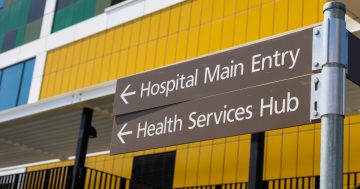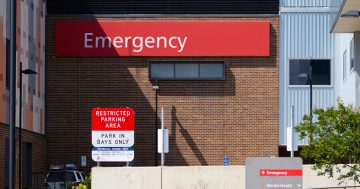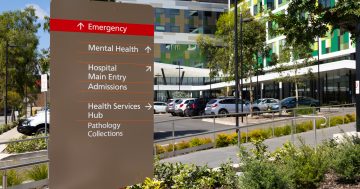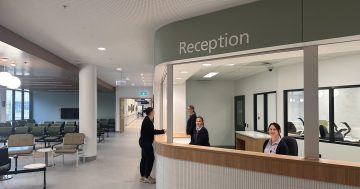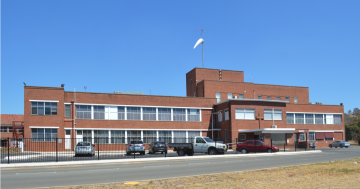
Emergency departments across the Riverina have seen significant drops in wait times during the first quarter of 2024. Photo: Michelle Kroll.
A new report from the Bureau of Health Information has shown that Riverina’s hospitals are among the fastest in the state to treat patients.
The quarterly report shows that in the first three months of 2024, just over 40,000 people attended Murrumbidgee Local Health District (MLHD) emergency departments with 73.6 per cent of patients discharged within four hours of arriving.
This places MLHD well above the state average of 55.9 per cent.
The report shows that 9 in 10 patients who were transported to an ED by paramedics arrived within the 30-minute benchmark.
Following the impressive results, MLHD Chief Executive Ms Jill Ludford thanked staff for their hard work throughout the period, with improvements seen in planned surgery wait times and excellent results reported for several emergency department (ED) key performance indicators, despite high demand for emergency care.
“Despite high levels of activity, our emergency departments continued to provide care within timeframes well above the state average,” Ms Ludford said.
“These results are a testament to the hard work of our highly skilled workforce and I commend our teams for the dedication they continue to show to the patients in our care.”
Ms Ludford said Hospital in the Home models were helping to ease pressure on the region’s busy EDs.
“In Wagga, we also have our Rapid Access Clinic (RAC) which incorporates Hospital in the Home, as well as services to treat lower acuity patients who come to the emergency department or arrive by ambulance,” said Ms Ludford.
“The RAC provides greater flexibility in the way care is delivered for patients who require rapid assessment, diagnosis and intervention, but don’t need to be in an emergency department.”
Wait times for planned surgeries also saw a dramatic decrease with 81.8 per cent of semi-urgent and non-urgent surgeries being delivered on time. Urgent surgeries were all delivered on time.
Hospital Statistics
Wagga Wagga Base Hospital
12,126 people attended the ED between January and March, a rise of 413 on the same period in 2023.
72.1 per cent of patients started treatment on time – 10.4 per cent higher than the state average for similar-sized hospitals.
Eight in 10 patients were delivered from ambulance to the ED under the 30-minute benchmark – 5.7 per cent more than the state average.
During the January to March quarter 1436 planned surgery procedures were performed, with all urgent planned surgeries (100 per cent) performed on time. Eight in 10 planned surgeries (77.0 per cent) were performed on time overall, an improvement of 23 percentage points compared to the same quarter in 2023 (54 per cent).
306 babies were born at the hospital in the quarter.
Griffith Base Hospital
5729 people attended the ED between January and March, a rise of 375 during the same period in 2023.
79.1 per cent of patients started treatment on time, eight per cent higher than the state average.
95.9 per cent of patients were delivered from ambulance to the ED under the 30-minute benchmark, the best in the state for hospitals of a similar size.
The majority of patients (72.7 per cent) were able to leave the ED within four hours – also better than the average for hospitals of a similar size in NSW (62.5 per cent).
During the January to March quarter at Griffith Base Hospital there were 269 planned surgeries performed, with all urgent planned surgeries (100 per cent) performed on time.
126 babies were born at the hospital in the quarter.
Deniliquin Health Service
2642 people attended the ED between January and March.
96.7 per cent started treatment on time, which is the second-best result for hospitals of a similar size in NSW.
Almost nine in 10 patients (84.6 per cent) were able to leave the ED within four hours of arriving – 7.1 per cent higher than hospitals of a similar size.
Almost all patients (97.0 per cent) were transferred from ambulance to ED staff within the 30-minute benchmark time – 2.7 per cent higher than hospitals of a similar size.
During the January to March quarter, Deniliquin Health Service completed 28 planned surgeries and 13 babies were born.
Young Health Service
2571 attended the ED between January and March.
More than eight in 10 patients (86.8 per cent) were able to leave the ED within four hours of arriving.
Almost all patients (86.8 per cent) started treatment on time, which is better than the average for hospitals of a similar size in NSW (78.1 per cent).
During the January to March quarter, Young Health Service completed 80 planned surgeries, with all urgent planned surgeries (100 per cent) performed on time; 22 babies were born.







